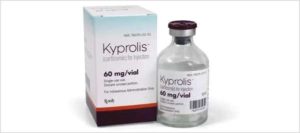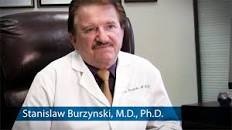
Recently Diagnosed or Relapsed? Stop Looking For a Miracle Cure, and Use Evidence-Based Therapies To Enhance Your Treatment and Prolong Your Remission
Multiple Myeloma an incurable disease, but I have spent the last 25 years in remission using a blend of conventional oncology and evidence-based nutrition, supplementation, and lifestyle therapies from peer-reviewed studies that your oncologist probably hasn't told you about.
Click the orange button to the right to learn more about what you can start doing today.
- You are here:
- Home »
- Blog »
- Multiple Myeloma »
- Myeloma- Antineoplaston Therapy
Myeloma- Antineoplaston Therapy

“Yes, I am still in CR from my refractory MM and have been since I completed ANP therapy in 4/99. Because I am only only one MM survivor, I will link a summary of ANP for MM below.”
Dear David- Thank you for posting your experience with Dr. Burzynski’s treatment (antineoplaston therapy) and its effect on your multiple myeloma (MM). I was diagnosed with MM in 2015 and, like you, I am “refractory-” I have had multiple conventional treatments. I have not yet been told that nothing else can be done by my conventional oncologist, but none of my eight treatments, including an autologous stem cell transplant, arrested my illness.
My best result was the transplant, which lasted for sixteen (16) months. I have had many side-effects from all the treatments I have had so far, including damage to my heart caused by Kyprolis, chemobrain, and an impaired immune system.
I saw a video on YouTube recently that made a strong case for Dr. Burzynski’s methods.
I hope you are still in remission from myeloma. Do you endorse antineoplaston therapy, given your success? Do you have any updates on what you have posted concerning it that you would be willing to share?
Thank you very much and best regards, Richard-
Dear Richard,
Antineoplaston Therapy (ANP) as possible Myeloma treatment:
- MM Survivor
- MM Cancer Coach
- Director PeopleBeatingCancer
Recommended Reading:
- Curcumin vs. Multiple Myeloma: The scientific evidence continues to pile up
- Cannabidiol (CBD) as Multiple Myeloma therapy-
- Autologous Stem Cell Transplant- NO OVERALL SURVIVAL for Myeloma
PERSONALIZED TREATMENT AT BURZYNSKI CLINIC
|
Diagnosis
|
No. of patients
|
OR (%)
|
SD (%)
|
PD (%)
|
|
Non-Hodgkin’s Lymphoma
|
131
|
64
|
26
|
10
|
|
Breast Cancer
|
433
|
62
|
23
|
15
|
|
Carcinoma of unknown primary
|
42
|
57
|
36
|
7
|
|
Prostate Cancer
|
322
|
53
|
38
|
9
|
|
Ovarian Cancer
|
99
|
51
|
29
|
20
|
|
Head and Neck Cancer
|
87
|
51
|
29
|
20
|
|
Colon Cancer
|
229
|
51
|
28
|
21
|
|
Hodgkin’s Disease
|
16
|
50
|
38
|
12
|
|
Kidney Cancer
|
41
|
49
|
34
|
17
|
|
Malignant melanoma
|
63
|
49
|
21
|
30
|
|
Lung Cancer
|
179
|
46
|
33
|
21
|
|
Urinary Bladder and Urothelial Cancer
|
39
|
45
|
32
|
23
|
|
Esophageal and Stomach Cancer
|
55
|
44
|
29
|
27
|
|
Liver Cancer
|
20
|
40
|
25
|
35
|
|
Uterine, Cervix, Vulvar, Endometrium
|
51
|
39
|
31
|
30
|
|
Brain Tumor
|
189
|
37
|
39
|
24
|
|
Multiple Myeloma
|
21
|
36
|
43
|
|
|
Biliary Tract Tumor
|
20
|
30
|
40
|
30
|
|
Pancreatic Cancer
|
55
|
24
|
51
|
25
|
|
Mesothelioma
|
17
|
24
|
41
|
35
|



